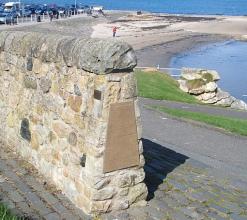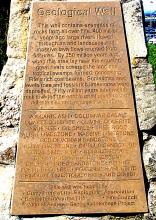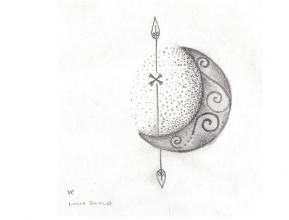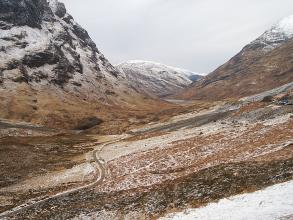Deep time
At one time, Scotland was separate from England. But that was about 400 million years ago, in the Silurian period. In a large-scale ultra-slow-motion collision, two massive continents crunched into one another, altering the face of the planet. The Pennines and the Lake District were thrown up from the bed of the ocean that was squeezed out of the way. Cracks in the earth's crust allowed huge magma flows to ooze out, and then cool, to add further interest to the landscape.
Fortunately, perhaps, we were not around to witness it, We were just a twinkle in Evolution's eye, and it would be nearly 400 million years before we arrived to set up home in the wreckage. Meanwhile, successive Ice Ages, and the rivers in the inter-glacials, formed the landscape of today, grinding and gouging, lifting and depositing as they came and went.
So, here we are today, in the northern areas of the island that was named “Albion” in Roman times, and later “Britannia” after the Britons who had settled here before, and during, the Iron Age. We live in a cool, sometimes cold and wet, outlier to continental Europe, where warmth has often meant family, fireside, songs and stories. It is natural that we now prefer to downplay our recent history of kings, nation states and empire and seek instead to revive the stunning beauty that used to surround us all. It is in celebration of our rich cultural heritage, enlivened by millennia of “immigration”, that we trace our way back to those early settlers who named their wild new home “Priten”.
Geology
The Solway Firth lies over a major fault line in the earth’s crust, the Solway Line. This marks the boundary between two ancient continents: Laurentia in the north and Avalonia in the south. They collided long ago creating the Scottish Southern Uplands and uniting the land masses of Scotland and Englandt. By contrast, ancient volcanic activity created the distinctive hills around the Forth and Tay such as Dundee Law, North Berwick Law and Arthur’s Seat in Edinburgh.. Read more.
Over to the East the resulting Great Whin Sill provided an natural foundation for a large section of Hadroia's Wall.
The oldest rocks in the Pennines are Ordovician in age (about 480 million years old). They were deposited along the edge of a thin continent called Avalonia (which consisted of England and Scandinavia) that lay near the south pole. It was an archipelago similar to Indonesia today. Slowly, during the Ordovician and Silurian (about 480 to 420 million years ago), Avalonia drifted northwards. Sediments were washed from the continent into the sea along its northern margin. These sediments now form the Ordovician and Silurian rocks, outcrops of which can be seen in the Fells and the Lake District. Read more.


Examples used include Volcanic Ash, Columnar Basalt, Quartz Dolerite, Olivine Dolerite, Andesite, Oil Shale, Tree Root, Algal Limestone, Massive Limestone, Red Devonian Sandstone, Shelly Limestone, Rippled Sandstone, Coral limestone, Conglomerate, Coal, Dolomitised Limestone, Cross-Bedded Sandstone, Felsite, Fossil Rootlets, Agate Rich Andesite, Crinoidal Limestone and Highland Schist!

